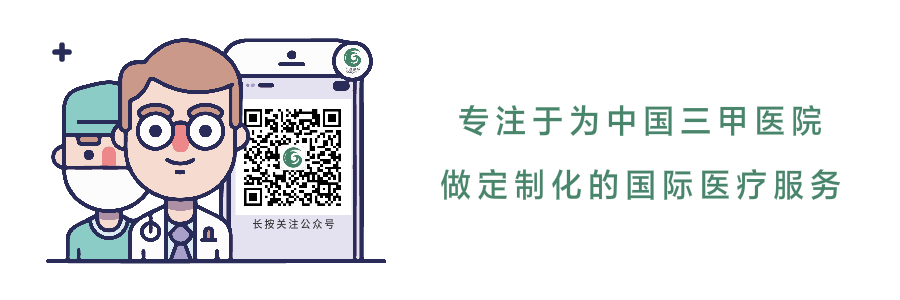-
动态

6月13日仁医医疗三人团队拜访了德国吉森大学附属医院创伤外科、手外科与整形重建外科主任Heiß教授。我们还见到了实验室El Khassawna教授及其科研团队。我们进行了两个小时的深入交流。吉森,这座仅有九万人口的大学城,超过一半的居民都是大学及大学医院的学生与教职工,处处洋溢着浓厚的学术氛围。这里诞生过X射线的发现者伦琴,也走出过有机化学的奠基人李比希,孕育了无数改变这个世界的科学家。到达医院后,Heiß教授与El Khassawna教授亲自到门诊大堂迎接我们。我们首先来到Heiß教授宽敞明亮的办公室进行了闭门会议,我们介绍了仁医医疗的整体情况及正在运营的人才培养、科研合作与客座教授项目。Heiß教授认真聆听,对我们的各类项目都表现出极大兴趣,尤其希望未来能够接收更多来自中国的优秀博士生与访问学者。随后,两位教授带领我们参观了近7000平方的创伤外科基础实验大楼。这绝对是全德国骨科实验室的天花板。吉森大学附属医院不仅是提供医疗服务的临床机构,它拥有自己的解剖研究所、生物医学研究中心,以及这栋基础实验科研大楼。Heiß教授介绍,大楼本身建设投入达四千万欧元,配备的都是世界顶尖的科研设备,而且所有设备均由科室自行筹资购置。实验楼与医院、各研究中心相互毗邻,功能分区清晰但紧密联通,无论是多学科科研合作,还是临床科研转化,都极为便利。参观过程中,教授团队花了一个多小时,带我们详细了解每一间实验室、每一台设备、每个科研团队以及目前在这里攻读博士或从事博士后研究的国际学者们。我们看到这里的博士生和导师团队关系融洽,氛围轻松专注。谈及自己的导师团队,两位中国博士生只用了四个字评价:“有求必应。”这栋大楼和团队的建设,源自Heiß教授11年前接手科室时的愿景:将临床中遇到的真实问题,直接转化为科研课题,在实验室中寻找答案,再回到临床,切实解决患者的困境。科室与科研楼之间短短数步,映射出转化医学最理想的距离,也诠释了医学科研的终极意义。参观结束时,Heiß教授将一枚吉森大学的纪念奖章赠与我们。奖章正面刻有伦琴与李比希两位大师的肖像,背面为吉森大学校徽,象征着这所古老学府在物理、化学、医学等领域的卓越成就,以及对科学与人类健康的深远影响。参观期间我们感叹,认识他们太晚,早该将中国最优秀的医生送到这里培养。Heiß教授微笑着说:“永远都不晚。”如今,来自山东烟台的丁医生已通过面试,收到了教授的邀请函,丁医生今年年底即将启程,成为中德医学教育合作的新篇章。Heiß教授还告诉我们,2026年,他很乐意再度访问中国,与中国同道分享创伤外科领域在患者照护、科研转化与人才培养方面的最新探索与深刻洞见。此次访问,让我们看到了德国大学附属医院临床与科研无缝衔接、跨学科合作高效开展的医学科研理想国,也让我们相信,真正改变世界的医学教育,始终立足于对病人深沉的关怀与对科学不懈的追求。
On June 13th, the team of three from Gloryren visited Prof. Heiß, Director of the Department of Trauma, Hand and Reconstructive Surgery at Justus-Liebig University Giessen. We also met with Prof. El Khassawna from the Experimental Trauma Surgery and their research team, and engaged in in-depth discussions for two hours. Giessen, a small university town with just 90,000 residents, is home to a vibrant academic community. More than half of its population is students, faculty, and staff from the university and its affiliated hospital. This city has nurtured Wilhelm Röntgen, the discoverer of X-rays, and Justus von Liebig, the father of organic chemistry, along with countless other scientists who changed the world. After arriving at the hospital, Prof. Heiß and Prof. El Khassawna kindly welcomed us in person in the reception hall. We first had an internal meeting in Prof. Heiß’s office, where we introduced the projects Gloryren is running, including talent training programs, research collaborations, and visiting professor projects. Prof. Heiß expressed strong interest, particularly in hosting outstanding Chinese doctoral students and fellows in the future. After the meeting, we were led on a tour of their Institute of Experimental Trauma Surgery with an area of around 7000 square meters. It’s undoubtedly one of Germany’s most advanced musculoskeletal research centers. University Hospital Giessen and Marburg, Campus Giessen is not just a clinical institution, it houses its own Institute of Anatomy and Cell Biology, Biomedical Center for Research Seltersberg (BFS), and Medical Research Center, the state-of-the-art experimental research building. Prof. Heiß introduced that the facility itself has involved an investment of 40 million euros, and it is equipped with world-leading scientific research facilities, all funded independently by the department. The research building is adjacent to the hospital and other research centers. With clearly defined functional zones that are closely connected, it is extremely convenient for both multidisciplinary scientific research cooperation and translational clinical research. During the tour, the research team spent over an hour showing us around in detail, introducing each laboratory, every piece of equipment, each research team, as well as the international researchers currently pursuing doctoral degrees or engaging in postdoctoral research here. We observed a harmonious relationship between doctoral students and their supervisor teams, with a relaxed yet focused atmosphere. When talking about their own supervisor teams, two Chinese doctoral students summed up their experience in four words: "Responding to every request." The establishment of this building and team stems from Prof. Heiß's vision when he took over the department 11 years ago: to directly transform real problems encountered in clinical practice into research topics, find solutions in the laboratory, and then apply them back to clinical practice to effectively improve patient care. The short distance of a few steps between the department and the research building reflects the ideal distance of translational medicine and also interprets the ultimate significance of medical research. At the end of the visit, Prof. Heiß presented us with a commemorative medal of Justus-Liebig University Giessen. The front of the medal is engraved with the portraits of two masters, Roentgen and Liebig, and the back is the university emblem of Justus-Liebig University Giessen, symbolizing the outstanding achievements of this ancient institution in the fields of physics, chemistry, medicine, etc., as well as its profound impact on science and human health. During the visit, we couldn’t help but express our regret: “We wish we had known them earlier—we should have sent China’s most outstanding doctors here for further studies long ago.” Prof. Heiß smiled and replied, “It’s never too late.” Now, Doctor Ding from Yantai, Shandong Province, has received an invitation from Prof. Heiß after an interview. Doctor Ding will depart at the end of this year, marking a new chapter in the cooperation of Sino-German medical education. Prof. Heiß also told us that in 2026, he is happy to visit China again to share with Chinese colleagues the latest explorations and profound insights in the field of trauma surgery in terms of patient care, research translation, and talent training. This visit allowed us to see an ideal state of medical research in a German university hospital, where clinical practice and scientific research are seamlessly connected and interdisciplinary cooperation is carried out efficiently. It also made us believe that medical education that truly changes the world has always been based on deep care for patients and unremitting pursuit of science.
